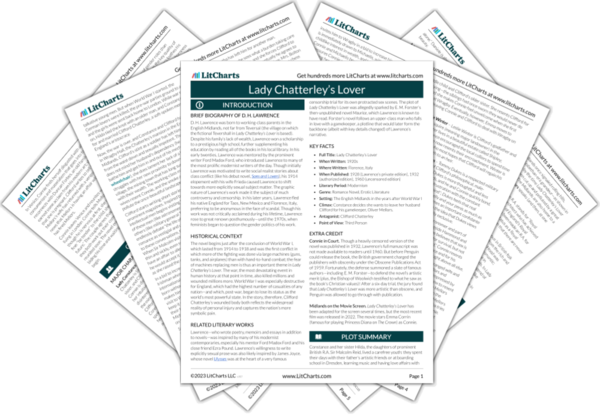As a young person, Constance values “talk” over physical “love,” or sex; in many ways, the novel centers on the way this value system changes as Constance gets older. But in this moment, Constance particularly prides herself on her ability to maintain control during sex, using her partner as a “tool” for her own pleasure. In other words, while Constance’s philosophical conversations can be passionate and unrestrained, her approach to sex—arguably one of the most instinctive, natural human behaviors—is transactional, even almost mechanical.
